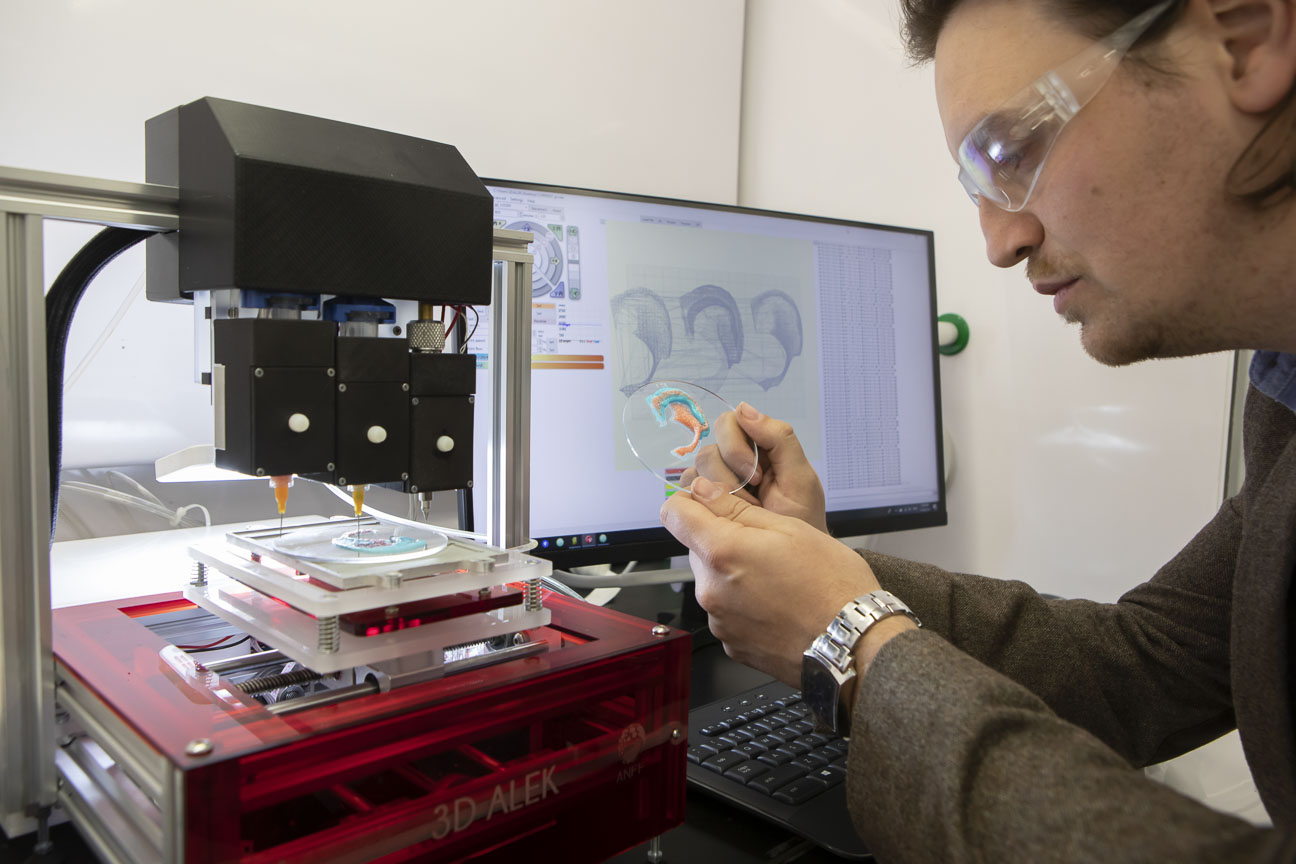News
3D printing bone tissue
Jun 28 2022
If you’re interested in learning about Biofabrication and want to know more about 3D printing, now is the time.

With enrolments now open and next intake of our online Biofabrication Graduate Certificate at the University of Wollongong (UOW) coming up in July for the Spring Session, I thought I would give some insight into the course and what it exactly involves.
What to expect from the course?
Students undertake two subjects, with each running over 13-15 weeks. These include Introduction to Additive Biofabrication and Practical Learning and Training in Additive Biofabrication.
The Moodle platform is setup like a book with chapters on the topics, which you can work through at your own pace online.
The course content comprises of a number of resources, videos and activities to fully immerse yourself in each topic. There are also many additional non-assessed activities for further learning.
Our teaching team has expertise related to the different sections and are readily available throughout the course to help students and to make the course as engaging as possible.
The first subject, Introduction to Additive Biofabrication, presents the principles of biofabrication, delivered through a case study on the development of the BioPen for cartilage repair. This is accompanied by a special focus on the ethical and regulatory issues in biofabrication.
The second subject, Practical Learning and Training in Additive Biofabrication, focuses on practical aspects, including preparing and modifying medical images using Invesalius and Mesh Mixer software, conversion into printable files and the printing process. These practical aspects are delivered through more case studies on microtia (printing ears), islet cell transplants for diabetes and brain on a bench (neural tissue regeneration). The special focus here is on collaboration, as biofabrication brings together interdisciplinary teams, such as engineers, biologists, material scientists and clinicians.
What’s unique about the course?
The course is unique in many ways, particularly its delivery and the content – and here are some reasons why:
What career path can I take after completing the course?
There are a couple of options for students who complete the course.
If the you’re interested in research, then the Grad Cert is a great stepping-stone into our Master programs, as mentioned. Most of the case studies we provide in the Grad Cert reflect the latest advances in biofabrication research currently being undertaken at UOW’s Innovation Campus in collaboration with clinicians and surgeons. Completing the Grad Cert and Master’s is ideal for then applying for a PhD scholarship to continue on with research.
Another option is working in industry or seeking employment in a related area, such as:
All our students who have completed the Grad Cert have gone on to work in the related areas listed above.
As I have pointed out, there are many opportunities, and even more coming in the future. It’s about working out what your special interest is and then positioning yourself to take advantage of an opportunity, provided by the Grad Cert.
If this sounds like something you’re interested in, you can find more information and can apply here. You can get also get in contact with myself, or can email course coordinator Prof Micheal Higgins with any questions you may have.
This article was originally posted on LinkedIn by Prof Gordon Wallace













